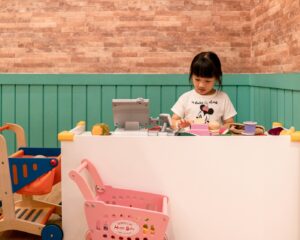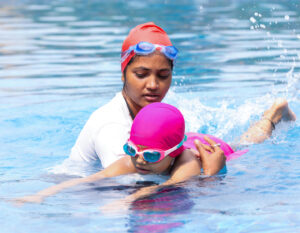
 Post Category - ParentingParenting - Post Category - Toddler & PreschoolerToddler & Preschooler - Post Category - 5-11 Year Olds5-11 Year Olds
Post Category - ParentingParenting - Post Category - Toddler & PreschoolerToddler & Preschooler - Post Category - 5-11 Year Olds5-11 Year OldsWould you be surprised or astonished to hear that the average toddler hears the word ‘No!’ 400 times in any one typical day, according to experts?
Is it any wonder that this is often one of the first words that children learn and often drives us to despair at times? It’s not only exasperating for you but it can also be destructive to your child: According to studies, kids who hear ‘No!’ too much have poorer language skills than children whose parents offer more positive feedback.
Additionally, saying ‘No!’ can become ineffective when it’s overused. Some children simply begin to ignore the word; others slip into a blustering rage the minute that dreaded syllable crosses your lips. Before you know it, you may have engineered a confrontational stand off situation with your child which is then most likely to reach the point of no return, with a full blown meltdown or temper tantrum.
We must not disregard that kids are busy learning in their busy kid world and we must not underestimate the huge developmental milestones and challenges they encounter as they continue to make progress through the ever challenging toddler developmental stages.
From The Kid’s Perspective
Let’s stop for a moment and put yourself in your child’s shoes. What would your initial or automatic response be if someone just said ‘No!’ to you? How would it make you feel and what might you want to do? Might you do the complete opposite and verbally protest or object? One thing’s for sure, it never feels good to hear ‘No!’ and let’s be honest, it doesn’t feel great to say it either!
Often, I discuss with parents exactly how difficult it is for a young child to cooperate when we’re asking them to comply with our requests and our needs, particularly when it’s our agenda and one that has few motivational factors or holds little interest for children.
Toddlers are naturally beginning to explore more, climb on furniture perhaps, move away from you and take all kinds of risks! Yet the first thing we do when we see them doing this is to say ‘No!’ followed quickly by ‘get down!’ Of course, we naturally have an instinct to protect children from what might be unsafe or even a little unpleasant. But if we take the time, we can learn a lot from what we observe, from what our children are trying to tell us but don’t yet have the words to explain.
Learning through Observation
As a parent, you’re in a valuable position to be a coach, providing just the right combination of encouragement, support and guidance. Parents are the primary teacher for the mastery of complex learning skills and should encourage active discussion and experimentation of new concepts and skills.
So how do we begin with our children? Well, for one, do you ever stop to think and listen to the ways that you may speak to your spouse, helper or friends? If you’re critical, judgmental or negative, it is likely that your children will imitate you. Sending unclear messages with your child can impact their self-esteem and open the door to potential problem behaviours. If you’re having problems, reflect on your own behaviour first before assessing what your child is or isn’t doing.
Kids at this stage are striving to express themselves and seeking to become more independent. Do you overly pre-empt your child’s needs, for example, saying things like, “You look hot, lets take your jumper off and get you a drink” without your child saying a single word? How would you feel if someone came along and told you what you looked like, how you were feeling and then without asking attempt to remove your jumper? We wouldn’t dream of it but why do we do this to children? We then wonder why they have a tantrum, but this is the way that your child is expressing themselves in the only way they know how.
Children at this stage also have limited attention spans. There are many new experiences that they’re trying to figure out, yet they can’t yet filter out what’s going on around them like adults can. Do we acknowledge this and remember that we may be trying to communicate with too many background distractions?
Kids hate to hear ‘No!’ and you hate to say it, so let’s look at a few alternative ways we can keep them safe and learning appropriate behaviours along the way.
 Effective Strategies Other Than ‘No!’
Effective Strategies Other Than ‘No!’
- Verbal reinforcements and appropriate language: Use descriptive praises like “Good job, good tidying up!” Be specific, i.e. “Good tidying of the bricks in the box!” Consider explaining to your child why her behaviour — such as banging on the table over and over again — is so bothersome to you. It may take a while for your child to develop concern for others’ feelings, but reminding him / her of your perspective will help to build the foundations of understanding empathy.
- Rewards: As soon as you have your child’s attention, reward them for listening to you. Say “Thank you, good listening” and then redirect with what you would like them to do.
- Tangible Rewards: Much of this can be seen when a smile, praise or sticker is offered to a child who demonstrates positive or appropriate behaviour.
- Visual Tools: It’s important to use visual clues and resources to help children learn and manage their behaviours, for example, using sand timers and objects of reference (showing a nappy at nappy changing times). This helps support their understanding of what exactly your expectations are as well as their cooperative skills.
- Give structured and reduced choices: Your child is throwing the ball indoors, and you’re bracing yourself for the sound of something crashing. Instead of saying, “No balls indoors!” try saying, “You can roll the ball indoors or take it outside where you can throw it. Why? By offering an option, they feel they have power over the situation; this encourages them to make simple choices and develop a sense of independence. Too many choices can be too overwhelming.
- Rephrasing: Instead of saying, “No, don’t run!” try, “Please walk when we are inside.”
- Clear expectations: Let your child know what they can do, not what they can’t. For example, if they want a cookie now you can say, “First we have our lunch and then we can have a cookie afterwards.” If they are hungry now, then offer an alternative choice using the two structured and limited choices mentioned above.
The most important thing is to really tune into what your child is attempting to show you and tell you. Consider the behaviors that your child is displaying and ask yourself: What do they want and what are they trying to do? What can I do to support this or redirect their learning appropriately? Finally, remember that it isn’t personal: No matter how difficult these stages are, they will get there… And so will you.
 View All
View All









 View All
View All





 View All
View All


 View All
View All









